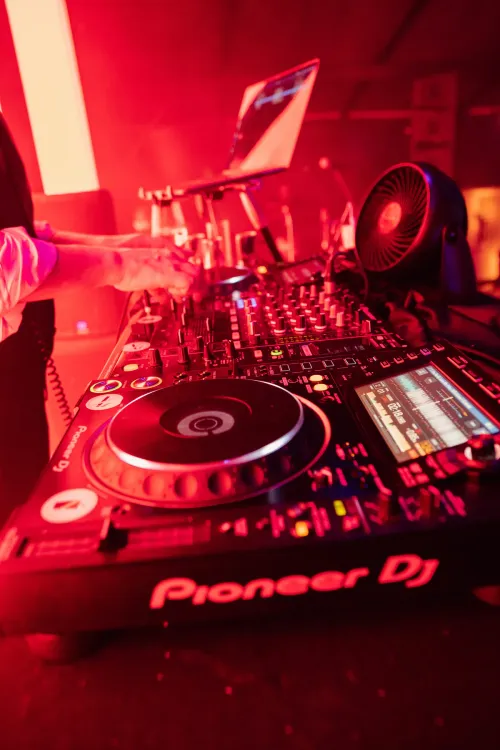A DAW, or Digital Audio Workstation, is a software application that enables you to record, edit, and produce audio. It is the central hub for all things music production, providing a comprehensive suite of tools for capturing, manipulating, and polishing sound.
Whether you're a seasoned musician or just starting out, a DAW is essential for creating professional-quality music.
DAWs Explained
In the past, music production was a largely physical endeavor involving tape recorders, analog mixing consoles, and a room full of outboard gear. While these tools still have their place in professional studios, the advent of digital technology has revolutionized the way music is created. DAWs have emerged as the new standard for music production, offering a versatile and powerful platform for bringing musical ideas to life.
DAWs convert analog audio signals into digital information that can be stored, processed, and manipulated on a computer. This digital audio data is represented visually on the DAW's interface as waveforms, allowing you to see and interact with the sound in a precise and intuitive way.
Functions of a DAW
A DAW encompasses a wide range of functionalities, covering every aspect of the music production process:
- Recording. DAWs allow you to capture audio from various sources, such as microphones, instruments, and external audio interfaces. This includes recording live performances, vocals, and instrument tracks.
- Editing. Once you have recorded your audio, DAWs provide a variety of editing tools to refine and polish your tracks. You can cut, trim, and rearrange audio clips, adjust timing and pitch, and apply fades and crossfades.
- MIDI Editing. MIDI, or Musical Instrument Digital Interface, is a protocol that allows you to control digital instruments and effects using a MIDI keyboard or other MIDI controller. DAWs provide MIDI editing tools for creating and manipulating MIDI sequences.
- Mixing. Mixing is the process of combining and balancing multiple audio tracks to create a cohesive and polished final mix. DAWs offer a comprehensive set of mixing tools, including equalizers, compressors, reverbs, and delays.
- Mastering. Mastering is the final step in the music production process, where the overall sound of the mix is enhanced and optimized for playback on various systems. DAWs include mastering tools for applying subtle adjustments and preparing the final audio file for distribution.
How to Use DAWs in Music Production
DAWs play a central role in all aspects of music production, including recordings, editing, mixing and mastering. Here are some specific examples of how DAWs are used:
- Composing with virtual instruments. DAWs often come with a wide range of virtual instruments, allowing you to create and play melodies, harmonies, and percussion parts using your computer keyboard or MIDI controller.
- Sampling. DAWs provide tools for importing, editing, and manipulating audio samples, enabling you to create unique sounds and textures.
- Sound design. DAWs offer a variety of effects plugins for creating and shaping sounds, allowing you to add reverb, delay, distortion, and other sonic enhancements.
- Music production for various genres. DAWs are used to produce music in a wide range of genres, from pop and rock to EDM and hip-hop.
Types of DAWs
There are numerous DAWs available, each with its own unique features and strengths. Here are eight of the most popular DAWs:
- Ableton Live. Ableton Live is renowned for its powerful real-time performance capabilities and intuitive workflow. It's favored by electronic music producers and live performers.
- Logic Pro X. Developed by Apple, Logic Pro X is a comprehensive DAW known for its professional-grade features. It's widely used in the music production industry, particularly by those working in the realm of electronic, hip-hop, and pop music.
- FL Studio. FL Studio (formerly named Fruity Loops) is a popular choice for hip-hop and electronic music producers, known for its step sequencer and pattern-based workflow.
- Pro Tools. Avid Pro Tools is the industry-standard DAW for professional recording studios and post-production facilities. It is commonly used in studios for tracking, editing, and mixing audio for music, film, and television.
- Reason. Propellerhead's Reason is unique for its rack-style interface, emulating the setup of physical studio gear.
- Cubase. Cubase is a versatile DAW with a long history in the industry. It offers advanced MIDI capabilities and robust audio recording and editing features.
- Bitwig Studio. Bitwig Studio is a relatively new DAW that has gained popularity for its innovative features and modular approach to music production.
- GarageBand. GarageBand is a free DAW that comes pre-installed on Macs. It offers a beginner-friendly interface and a range of essential features.
FAQs
Do I need a DAW to make music?
Yes, a DAW is essential for modern music production. It serves as your creative hub, providing tools for recording, editing, arranging, and mixing your music.
What is the difference between a DAW and a hardware audio interface?
A DAW is a software application, while a hardware audio interface is a physical device that connects microphones, instruments, and other audio sources to your computer. An audio interface is essential for recording audio into a DAW.
What's the difference between a DAW and a DJ software?
A DAW focuses more on music production and recording, while DJ software is tailored for live mixing and performance. However, some DAWs, like Ableton Live, bridge the gap and are popular among both producers and DJs.
Can I use a DAW without any musical knowledge?
Yes, you can start using a DAW with minimal musical knowledge. Many DAWs have features like loops, presets, and virtual instruments that can help you get creative even if you're not a trained musician. As you learn, your musical understanding will naturally grow.
Can I use a DAW on any computer?
Most DAWs are compatible with both Windows and macOS. However, system requirements vary, so checking if your computer meets the specifications for the chosen DAW is essential.
Can I collaborate with others using a DAW?
Yes, collaboration is a key feature of many DAWs. You can share project files, collaborate in real-time, or export stems for others to work on, making remote collaboration easy and efficient.
Are there mobile versions of DAWs?
Yes, many DAWs offer mobile versions for tablets and smartphones. These are streamlined versions that allow you to sketch ideas on the go. Examples include GarageBand for iOS and FL Studio Mobile.








